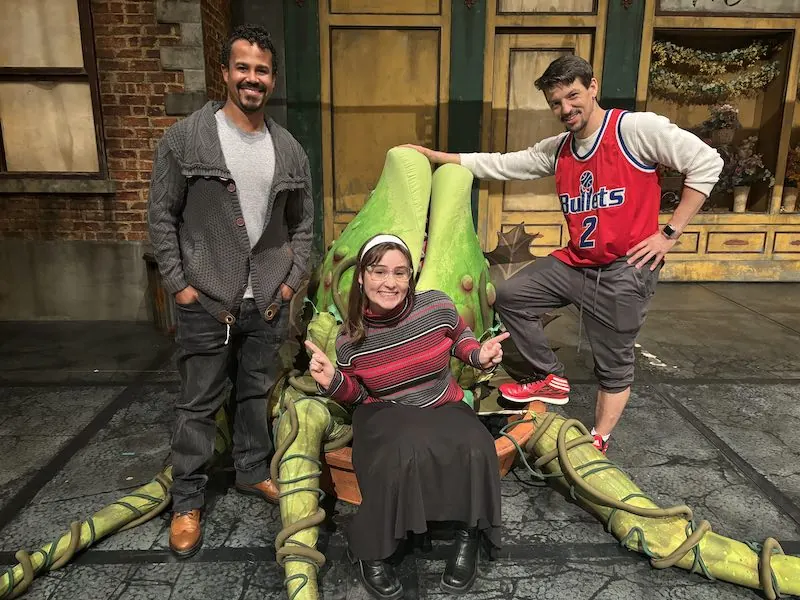Community, Leadership, Experimentation, Diversity, & Education
Pittsburgh Arts, Regional Theatre, New Work, Producing, Copyright, Labor Unions,
New Products, Coping Skills, J-O-Bs...
Theatre industry news, University & School of Drama Announcements, plus occasional course support for
Carnegie Mellon School of Drama Faculty, Staff, Students, and Alumni.
CMU School of Drama
Monday, April 01, 2024
Meet the people in the plant in 'Little Shop of Horrors' at Ford's Theatre
DC Theater Arts: When audiences see Little Shop of Horrors at Ford’s Theatre, they probably are not thinking about the people inside the plant: not the people who are the plant’s victims, and not the stellar Tobias A. Young who voices it, but the people literally inside the plant throughout the show’s two-hour runtime.
Subscribe to:
Post Comments (Atom)

3 comments:
I attended an intriguing play during last year's fall break, staged off-Broadway. What struck me most was the clever utilization of a small theater stage, culminating in a striking contrast when a looming, eerie puppet dominated the entire space in the finale. This shift created a palpable dramatic effect, intensifying the narrative's impact. My curiosity extended beyond the performance itself. I yearned to glimpse the backstage hustle. Between each scene transition, I marveled at the seamless scene transitions executed with almost eerie silence. The technical intricacies of puppetry, often overlooked by audiences, were laid bare in an accompanying article. From the manipulation of a reverse infrared screen to the precise timing of intricate movements, the craftsmanship involved was staggering. Yet, it's this hidden artistry that imbues the theatrical experience with depth and authenticity, transcending the physical confines of the stage. Each gesture and motion breathe life into the inanimate, rendering the puppet a character as vital as any human actor. This revelation adds a layer of richness to the performance, enhancing its immersive power and leaving a lasting impression on the audience.
I have never seen Little Shop of Horrors, but I generally know the plot. Or at least I know that there is a man eating plants in the shop. I had no clue that someone or multiple people were inside the plant operating it. Since I’ve never seen the show, I didn’t know how it would function. In our basic design class we recently learned more about puppets and how they’re made and they’re different uses and I never thought of this being a puppet but it definitely qualifies as one. It was really cool to hear about how collaborative the process of working this puppet is. Since they have three people maneuvering it at once. It definitely takes a lot of rehearsal and synchronization, and they also have to work with the actor playing the voice of the plant.I also thought that having a screen on the inside of the puppet to see the other actors on stage was really cool and beneficial for the puppeteers to react to what is happening.
This article just goes to show how much variety there is between roles one can have in theater. There are so many people working on productions, way more than just the actors the audience sees on stage. The role of the puppet’s puppeteers is not one that many people think of when they think of Little Shop but they are so vital to the show. They bring this essential character to life without ever really being seen themselves. I had no idea that this puppet was so intricately controlled by two actors inside it who are quite literally pulling the strings but I think it’s great that they are getting recognition for what they do. It would be incredibly easy to leave them in the puppet during bows and not let them bow as themselves but I think it’s important that they are able to come out to take their bow.
Post a Comment